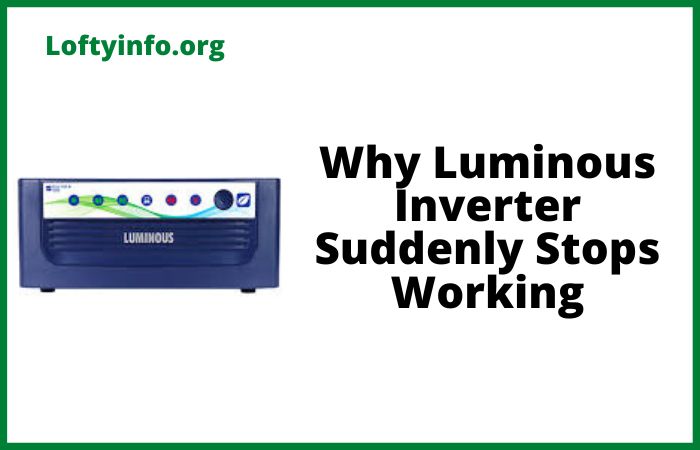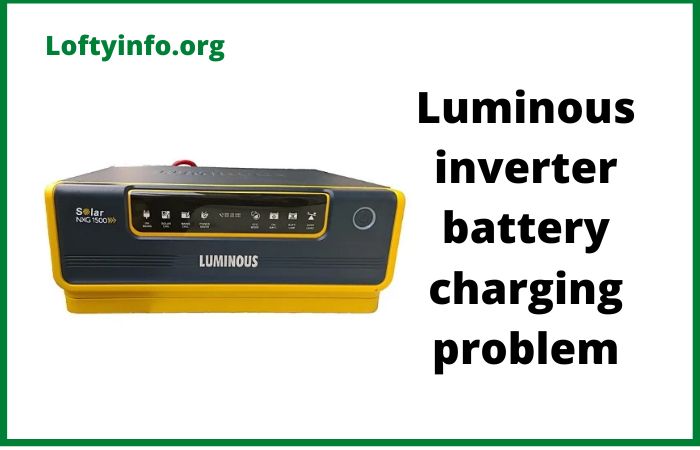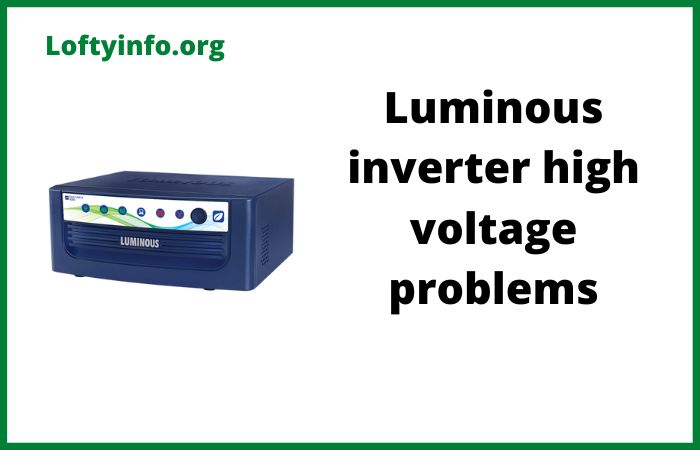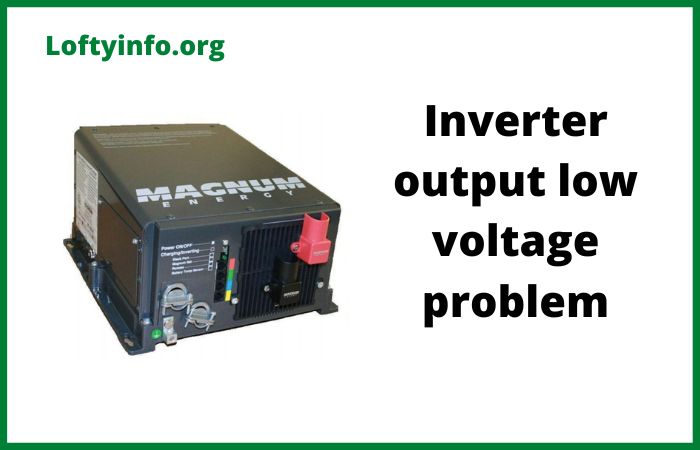Common Victron Inverter Problems: Causes and Solutions
Victron Energy has built a solid reputation for manufacturing reliable power inverters that serve off-grid homes, marine applications, RVs and backup power systems worldwide.
Despite their robust engineering and quality construction, even the best Victron inverters can encounter issues that disrupt their performance.
Understanding these common Victron inverter problems, their underlying causes and effective troubleshooting methods can save you time, money and the frustration of unexpected power interruptions.
Whether you’re a seasoned solar installer, a boat owner relying on marine power systems or a homeowner with an off-grid setup, recognizing these issues early and knowing how to address them will help you maintain optimal system performance.
This comprehensive guide walks you through the most frequently encountered problems with Victron inverters and provides practical solutions that work.
Common Victron Inverter Problems
1) Overload and Overload Shutdown Issues
One of the most common problems users face is overload shutdown, where the inverter automatically shuts down to protect itself from damage.
This happens when the connected load exceeds the inverter’s rated capacity, either continuously or during peak demand periods.
Cause: Overload conditions typically occur when too many appliances are running simultaneously or when devices with high startup currents like refrigerators, air conditioners or power tools are switched on.
Some appliances draw significantly more power during their initial startup phase than during normal operation, which can trigger an overload response even if the steady-state load is within limits.
Troubleshooting: Check the total wattage of all connected devices and compare it to your inverter’s continuous power rating.
Use a clamp meter to measure the actual current draw during operation.
Pay special attention to appliances with motors or compressors as these can draw 3-7 times their normal operating current during startup.
Solution: Reduce the number of devices running simultaneously or upgrade to a higher-capacity inverter if your power needs have genuinely exceeded your current system’s capabilities.
Consider using soft-start devices for equipment with high inrush currents.
You can also stagger the startup of high-power appliances to avoid simultaneous peak demands.
Ensure your inverter’s surge capacity matches the startup requirements of your most demanding appliances.
2) Low Battery Voltage Warnings and Shutdowns
Victron inverters are designed with protective mechanisms that trigger warnings or shutdowns when battery voltage drops below safe operating levels.
This is one of the prevalent Victron inverter problems that users encounter, particularly during periods of high energy consumption or insufficient charging.
Cause: This issue stems from several factors including undersized battery banks, inadequate solar charging capacity, parasitic loads draining batteries overnight, aging batteries with reduced capacity or improper voltage settings in the inverter configuration.
Cold weather can also significantly reduce battery capacity and voltage output.
Troubleshooting: Monitor your battery voltage using the VictronConnect app or a battery monitor.
Check voltage levels both under load and at rest to determine if you have a capacity issue or a connection problem.
Inspect all battery terminals and cables for corrosion or loose connections that can cause voltage drops.
Verify that your charging sources are functioning correctly and providing adequate power to replenish the batteries.
Solution: If your batteries are regularly dropping below the low-voltage threshold, you may need to expand your battery bank capacity or improve your charging infrastructure.
Clean all battery connections and ensure cables are properly sized to minimize voltage drop.
Consider adjusting the low-voltage disconnect settings in your inverter configuration to better match your battery type but never set these below manufacturer recommendations as this can damage your batteries. If your batteries are more than 3-5 years old, they may have lost significant capacity and require replacement.
3) Temperature-Related Shutdowns
Inverters generate heat during operation and excessive temperatures can cause automatic shutdowns to prevent component damage.
This represents a significant concern among various Victron inverter problems, especially in hot climates or poorly ventilated installations.
Cause: High ambient temperatures, inadequate ventilation around the inverter, dust accumulation blocking cooling fans or heat sinks, direct sunlight exposure or installation in confined spaces without proper airflow all contribute to overheating.
Running the inverter at or near maximum capacity for extended periods also generates substantial heat.
Troubleshooting: Check the inverter’s internal temperature using VictronConnect or the display panel.
Inspect the installation location for proper ventilation and clearance around the unit.
Examine cooling fans to ensure they’re operational and not obstructed.
Feel the inverter casing to identify hot spots that might indicate internal issues.
Solution: Relocate the inverter to a cooler, well-ventilated area if possible.
Ensure there’s adequate clearance on all sides as specified in the installation manual, typically 10-15 cm minimum.
Install additional ventilation fans to improve airflow in enclosed spaces.
Clean dust and debris from cooling vents and heat sinks regularly.
Consider adding heat shields if the inverter is exposed to direct sunlight.
In extreme cases, an air conditioning solution for the equipment room may be necessary.
Reduce the continuous load on the inverter to decrease heat generation.
4) Ground Fault and Earth Leakage Errors
Ground fault errors indicate that the inverter has detected current leakage to ground, which poses safety risks and can damage equipment.
This is among the more complex Victron inverter problems requiring careful diagnosis.
Cause: Ground faults occur due to damaged wiring insulation, moisture ingress in electrical connections, faulty appliances with internal shorts to their metal casings, improper grounding of the inverter or electrical system or degraded cables in marine environments where saltwater exposure is common.
Troubleshooting: Disconnect all loads from the inverter and reset the system.
Reconnect appliances one at a time to identify which device is causing the fault. Use a megohm meter to test insulation resistance of cables and connections.
Inspect all wiring for visible damage, chafing, or moisture.
Check that the inverter’s ground connection is secure and properly bonded.
Solution: Replace any damaged cables or faulty appliances causing the ground fault. Improve cable routing to prevent future chafing or damage.
In marine applications, use marine-grade cables and ensure all connections are properly sealed against moisture.
Verify that your entire electrical system follows proper grounding practices according to local electrical codes.
If ground faults persist, consult a qualified electrician to inspect your entire system for hidden issues.
5) Communication Errors with Battery Monitor or Solar Charger
Modern Victron systems rely on communication between components through VE.Bus or VE.Direct connections.
Communication failures can cause system malfunctions and prevent proper monitoring.
Cause: Loose or damaged communication cables, incorrect cable types, interference from other electrical devices, outdated firmware on one or more system components or configuration mismatches between devices can all disrupt communication.
Troubleshooting: Check all VE.Bus and VE.Direct cable connections to ensure they’re firmly seated.
Examine cables for physical damage.
Verify you’re using genuine Victron communication cables rather than generic alternatives.
Check firmware versions on all connected devices using VictronConnect and ensure compatibility.
Look for error codes or communication warnings in the device displays or app.
Solution: Reseat all communication cables and replace any that show signs of damage.
Update firmware on all system components to the latest compatible versions through VictronConnect.
Use only Victron-certified communication cables to ensure reliability.
Route communication cables away from high-voltage AC wiring and other potential sources of electromagnetic interference.
If problems persist after these steps, try replacing communication cables even if they appear undamaged as internal wire breaks can be invisible.
6) AC Input Not Detected or Power Assist Failures
When a Victron inverter with charging capability fails to detect AC input from shore power or a generator, it cannot charge batteries or provide power assist functionality.
This prevents the system from operating in one of its key modes.
Cause: This issue can result from incorrect input voltage or frequency settings that don’t match the actual power source, loose AC input connections, tripped circuit breakers on the input side, ground relay faults, generator voltage or frequency instability or internal relay failures in the inverter.
Troubleshooting: Verify that AC power is actually present at the input terminals using a multimeter.
Check the inverter’s input voltage and frequency settings in VictronConnect to ensure they match your power source specifications.
Inspect all AC input connections for tightness and corrosion.
Test with a different known-good AC source if available.
Monitor generator output voltage and frequency stability if using a generator.
Solution: Adjust the input voltage and frequency ranges in the inverter settings to accommodate your power source, particularly if using a generator that may have slight variations.
Tighten any loose connections and clean corroded terminals.
Reset the inverter completely by disconnecting it from all power sources for several minutes.
If using a generator, ensure it’s properly sized for the load and that its voltage regulation is functioning correctly.
Some generators require specific inverter settings for compatibility, consult your generator’s manual for recommended inverter configuration parameters.
7) Persistent Alarm Conditions and Error Codes
Victron inverters provide various alarms and error codes to alert users to problems but sometimes these persist even after the apparent cause has been addressed, leaving users confused about the actual system status.
Cause: Alarms may continue due to latched fault conditions that require manual reset, configuration settings that are too sensitive for the application, intermittent problems that recur periodically or actual ongoing issues that haven’t been fully resolved despite troubleshooting attempts.
Troubleshooting: Record all error codes and alarm descriptions precisely.
Consult the Victron manual or online documentation to understand what each code indicates.
Check the system history in VictronConnect to see when alarms occurred and if there’s a pattern.
Verify that previous troubleshooting steps actually resolved the underlying issues rather than just temporarily suppressing symptoms.
Solution: Manually clear alarm conditions through the device menu or VictronConnect after confirming the underlying problem is genuinely resolved.
Adjust alarm thresholds if they’re unnecessarily sensitive for your specific application, but never disable important safety alarms.
If alarms recur frequently, implement continuous monitoring to capture the exact conditions when failures occur.
Contact Victron support or a certified installer for persistent unexplained errors, as some conditions may require professional diagnosis or firmware updates to resolve.
Maintaining Your Victron Inverter for Long-Term Reliability
Prevention is always better than cure when it comes to inverter problems.
Regular maintenance significantly reduces the likelihood of encountering these common issues.
Schedule quarterly inspections to check all electrical connections, clean cooling vents, verify proper ventilation and test battery health.
Keep firmware updated to benefit from improvements and bug fixes.
Monitor system performance through VictronConnect to catch developing problems before they cause failures.
Understanding these common Victron inverter problems and their solutions empowers you to maintain a reliable power system.
While Victron manufactures excellent equipment, proper installation, configuration and maintenance remain essential for trouble-free operation.
When issues do arise, systematic troubleshooting based on understanding the root causes will help you quickly restore normal operation and minimize downtime in your power system.
Most Reliable Solar Generator for Camping
Causes of amaron inverter overload problems
Luminous inverter low voltage problem causes and solutions explained
Why luminous inverter high voltage problems occur
Why luminous inverter 650 overload problems happen
How common solax inverter problems happens
Common deye inverter problems and solutions explained
Common goodwe inverter problems and solutions explained
Solutions to common sungrow inverter problems and solutions
Causes of Luminous inverter auto cut problem
Common 3116 cat engine problems






